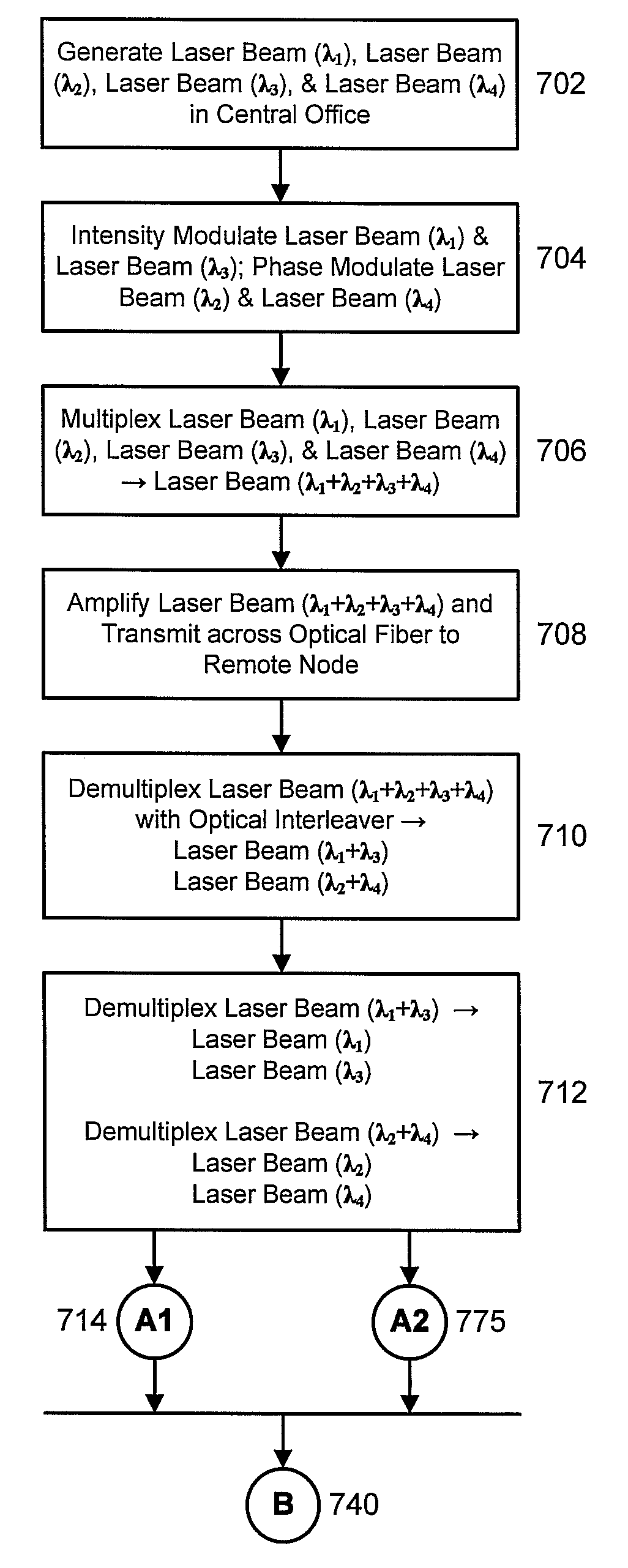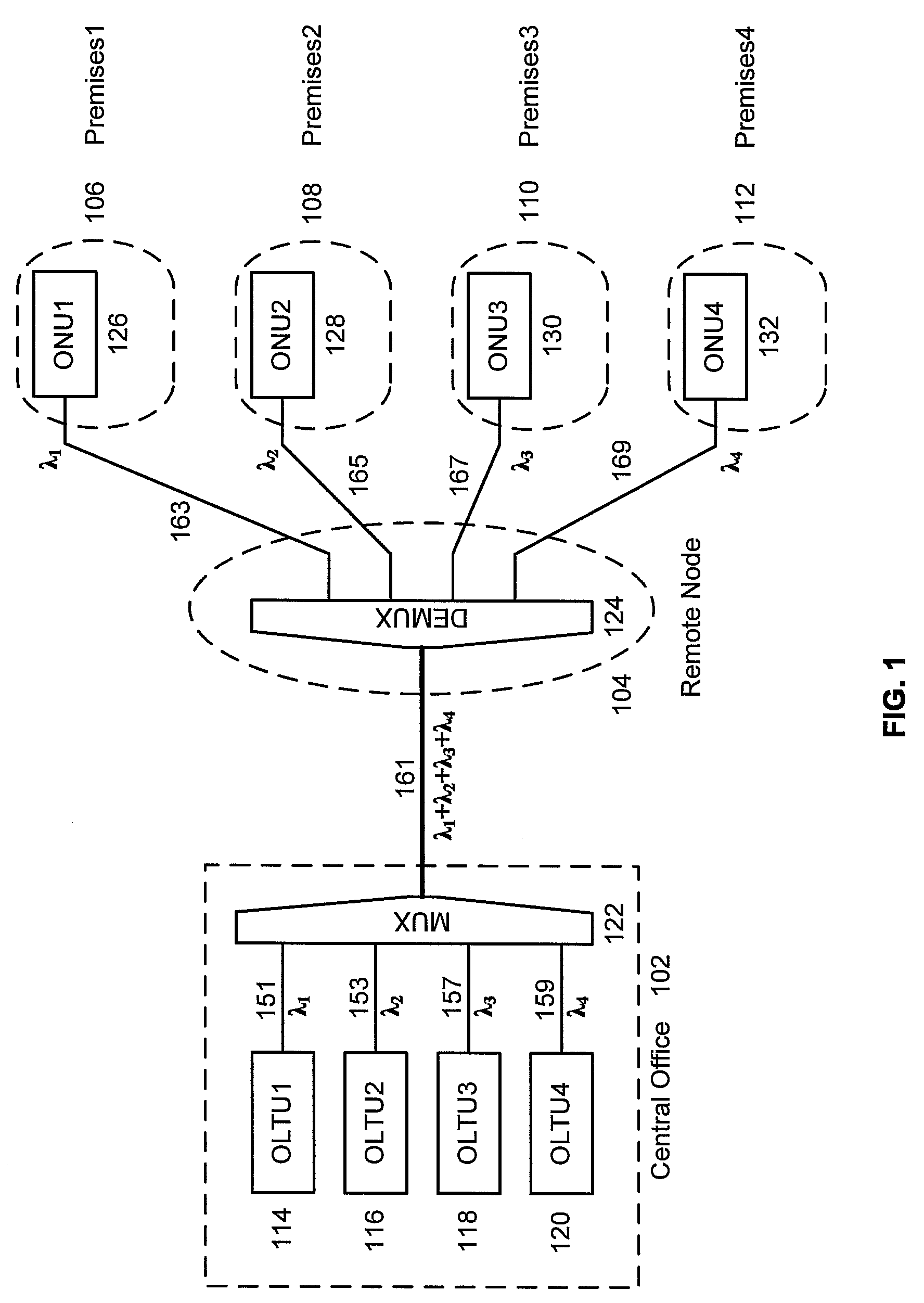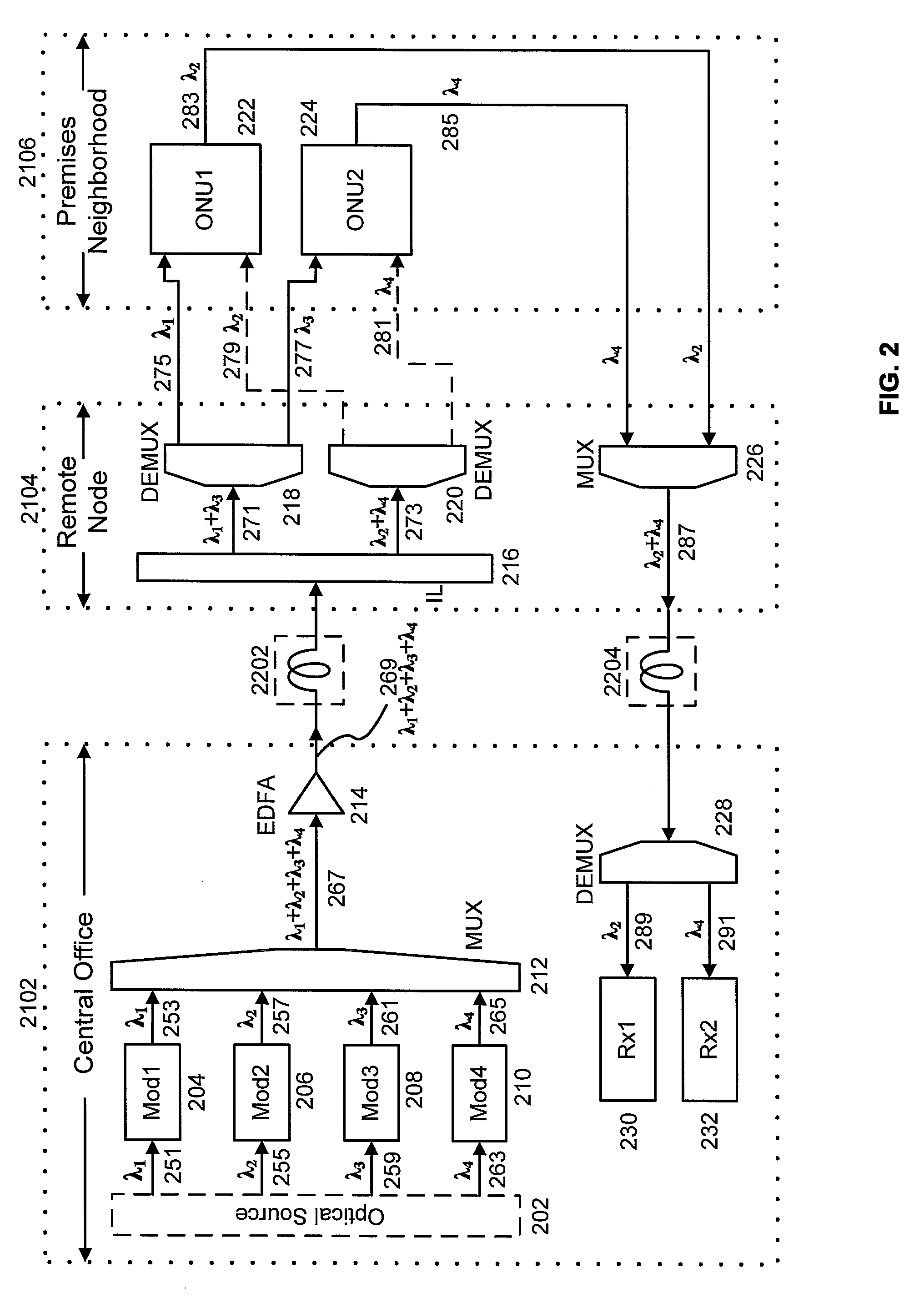Wavelength Division Multiplexed Passive Optical Network
a passive optical network and wavelength division technology, applied in the field of fiber optic transmission systems, can solve the problems of difficult and expensive supply of reliable power to outside plants, uncontrolled environment, equipment installation,
- Summary
- Abstract
- Description
- Claims
- Application Information
AI Technical Summary
Problems solved by technology
Method used
Image
Examples
Embodiment Construction
[0015]Shown in FIG. 1 is a high-level schematic of an example of a FTTP network based on wavelength division multiplexing. The primary locations involved are the central office 102, the remote node 104, and premises1106-premises4112. The example shows a single remote node and four premises. In general, multiple remote nodes may be serviced by a single central office, and multiple premises may serviced by a single remote node. Remote node 104 is also referred to as a neighborhood node, which services the neighborhood comprising premises1106 to premises4112. As discussed above, central office 102 typically has a well-regulated environment and reliable power sources. The remote node 104, however, is typically installed in outdoor plant.
[0016]For simplicity, FIG. 1 shows an example of a network providing uni-directional services, in which data is transported downstream from the central office 102 to premises1106—premises4112. Examples of networks providing bidirectional services are dis...
PUM
 Login to View More
Login to View More Abstract
Description
Claims
Application Information
 Login to View More
Login to View More - R&D
- Intellectual Property
- Life Sciences
- Materials
- Tech Scout
- Unparalleled Data Quality
- Higher Quality Content
- 60% Fewer Hallucinations
Browse by: Latest US Patents, China's latest patents, Technical Efficacy Thesaurus, Application Domain, Technology Topic, Popular Technical Reports.
© 2025 PatSnap. All rights reserved.Legal|Privacy policy|Modern Slavery Act Transparency Statement|Sitemap|About US| Contact US: help@patsnap.com



